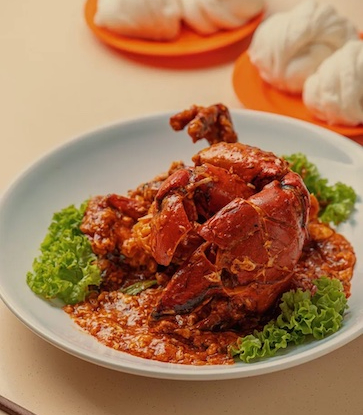Steamed fish is one of those dishes that often appear on most Hong Kong families’ dining tables. For many, it’s the soul of the meal. From the type and quality of the fish to the heat applied, not a tiny mistake is tolerated. Those little seconds of overcooking could drag the whole meal down.
So, what should we do to ensure it’s cooked properly? Leung Fai Hung, executive Chinese chef of InterContinental Grand Stanford Hong Kong, shares his secrets for making an enticing plate of steamed fish.

A live fish should have a shiny body with sharp colours and be animated in terms of eye expression and movement. Don’t choose the ones with damage in the body or fins, as it’s a sign of pressure, fighting or sickness, all of which affect the quality of the meat.
As for distinguishing wild sea fish from the farmed ones, it really comes down to experience. Usually, wild fish looks lighter in colour with a tad of pale yellow. This applies to camouflage grouper, tiger grouper, green grouper and mud grouper. The only way to tell is to keep looking at and comparing different fish or buy the fish from a trustworthy fishmonger.
Given the large sizes, the likes of giant grouper and large green grouper are usually sold filleted. Touch the piece of fish meat lightly to test its freshness; see if it bounces back when pressed. It should also look shiny and not feel slimy. If you have an oversized fish that can’t fit into the wok, consider chopping it up and steaming it plain or with soya sauce. It’s not the ideal treatment, since some fish oil would be lost. But it has its own merits. I once got home a fish weighing 6 catties (3.6kg) and we prepared it several different ways. That was a real treat.

Theoretically, it’s better to do it yourself at home. But considering many modern home kitchens are small and under-equipped, and it’s nearly impossible to find sea water to keep the fish alive, I’d rather ask the fishmonger to help. Butchering fish should take place when it stays still. If it gets killed in an overexcited state, its flesh would tense up and the overall quality would decrease.
3. What should we prepare before steaming fish?
Take the fish out from the fridge around 15 minutes before steaming. Make sure it’s completely descaled. Score the back and the belly of the fish, and pierce some holes in its body. This would result in an even distribution of heat.
4. What are the common ingredients to accompany steamed fish?
Plain steaming: steamed fish with only spring onion, chicken oil and fermented black soya bean sauce, suitable to most fish.
Traditional method: steaming with sliced shiitake mushroom, meat, dried mandarin peel and ginger. Suitable to most fish (except for mottled spinefoot).
Lemon: steaming with fresh and Chinese preserved lemon, a classic pairing for flathead grey mullet.
Fermented black soya bean sauce: steaming with fermented black soya beans, usually paired with flathead grey mullet, butterfish and Waigeo barramundi.
Dried mandarin peel: steaming with dried mandarin peel, best with spotted scat, mottled spinefoot and tonguefish. The refreshing citrus notes help eliminate the muddy tastes in the fish.

Air circulation is the biggest factor in steaming fish. Putting chopsticks and spring onion under the fish helps achieve this goal. Spring onion also gets rid of the fishy taste from the fish. Simply use it along with ginger and chicken oil. Chicken oil gives the fish a smooth texture and lavish fragrance. You can also substitute it with cooking oil or not add any oil to the steamed fish. The steamed fish at the restaurant isn’t much different from the ones you make at home. It’s all the equipment that makes us look more professional.
There’s a standard formula in steaming fish. A fish weighing 1 catty takes six minutes to steam. Double the size, double the time. Certainly, it’s just a rough estimate and should be adjusted based on the situation. For instance, the power of the heat source differs from one family to another. Even the plate’s thickness has a role to play. Finally, don’t take the lid away when the fish is being steamed. The loss of hot air and drop in temperature are enemies to delicious steamed fish.

6. How well should we steam the fish?
The desired doneness of steamed fish has changed over time. Smoothness is preferred by the older generation, so much so that they preferred the fish to be cooked to just 80%, using the residual temperature in the fish to finish the cooking process, which could take place while it’s being eaten. The flesh at the core sticking to the bones was a sign of precise cookery. But the gold standard of the old days could lead to returned orders now. Contemporary diners like to have the fish fully cooked in the kitchen.
If you realise the fish isn’t steamed enough when it is served on the table, the only solution is to reheat it. Such situation is less than ideal, because this would unavoidably weaken the original flavour and sweetness of the fish. Instead, remember to use a chopstick to pierce the fish before it’s taken off the wok. If the chopstick goes through without resistance, it means the steamed fish is good to go.
7. How do you prepare restaurant-standard seasoned soya sauce?
Take the juice left by the steamed fish and add 1.5 parts of soya sauce and a bit of sugar. Heat it up and pour the sauce over the fish covered with spring onion. It immediately elevates the umami of the whole dish. This homemade blend beats your store-bought seafood soya sauce any day of the week.
8. Which types of fish have disappeared from our dining table?
Unfortunately quite a few. Star snapper, rudderfish, Napoleon fish, wild red grouper, wild tiger grouper, blackbarred morwong and Oriental sole are almost unattainable nowadays.





















